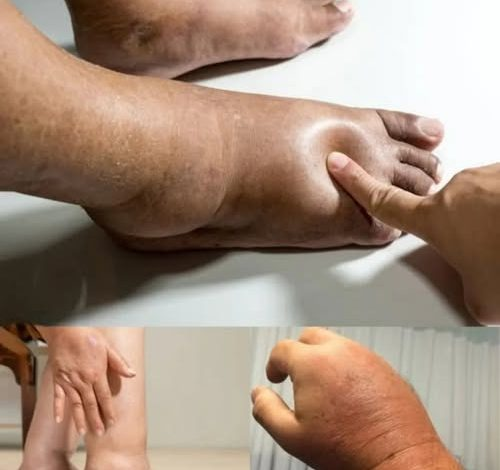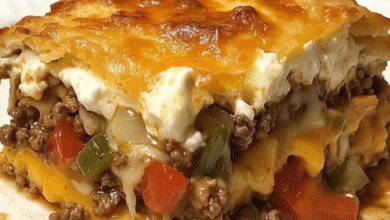If your feet and hands are swollen, here is what your body is trying to tell you

🌿 Naturally Reducing Swelling: What to Eat and Why It Matters
Swelling in your hands or feet can be anything from a mild annoyance to a sign of something more serious. It might show up after a long day of standing, sitting for too long, during hot weather, hormonal changes, or as a result of circulation problems. While persistent or painful swelling should always be discussed with a healthcare professional, your everyday habits—especially your diet—can make a noticeable difference in managing fluid retention and promoting vascular health.
Here’s how the right foods can help your body balance fluids, support circulation, and ease inflammation naturally.
🥑 Potassium: The Key to Fluid Balance
Potassium plays a vital role in maintaining proper hydration and keeping sodium in check. When your potassium intake is too low, sodium can accumulate—causing your body to hold onto water and triggering swelling.
Add these potassium-packed foods to your meals:
- Bananas
- Avocados
- Oranges
- Sweet potatoes
- Beans and lentils
These ingredients help flush out excess sodium, ease water retention, and improve blood flow.
💧 Hydrating Foods That Do More Than Quench Thirst
Drinking water is important, but some fruits and vegetables naturally boost hydration while offering anti-inflammatory benefits.
| Food | Benefit |
|---|---|
| Cucumbers | Made of over 90% water; support tissues and reduce bloating |
| Watermelon | Super hydrating and slightly diuretic; rich in inflammation-fighting lycopene |
| Citrus fruits | Oranges, lemons, and grapefruits hydrate and fortify vessels with vitamin C |
🥬 Leafy Greens for Better Circulation
Leafy greens like spinach, kale, and Swiss chard are rich in both magnesium and potassium—minerals that ease swelling by regulating fluid levels and relaxing blood vessels.
Simple ways to add more greens:
- Toss into your salads
- Blend into smoothies
- Cook into omelets or stir-fries
🍓 Antioxidant Powerhouses
Berries, particularly blueberries, strawberries, and raspberries, are rich in anthocyanins—compounds that strengthen capillaries and calm inflammation.
Bonus tip:
Pineapple contains bromelain, an enzyme known for reducing swelling. It’s often used by athletes for recovery, but it’s equally effective for everyday inflammation.
🌱 Natural Diuretics & Anti-Inflammatory Spices
Certain foods naturally encourage your body to release extra water while calming inflammation.
| Food/Spice | What It Does |
|---|---|
| Celery | Helps remove sodium and excess fluid; aids digestion |
| Ginger & Turmeric | Powerful anti-inflammatories that boost blood flow |
| Parsley | A gentle diuretic; easy to add to salads, soups, or smoothies |
🥜 Fats and Seeds That Fight Swelling
Nuts and seeds are rich in anti-inflammatory compounds and support healthy circulation. Combined with omega-3-rich fats, they form a powerful team against puffiness.
Great options include:
- Almonds
- Walnuts
- Flaxseeds
- Pumpkin seeds
Pair them with olive oil or fatty fish like salmon and sardines for extra benefits.
🧘♀️ Everyday Habits That Support Your Body
Eating the right foods is just one part of the picture. These small changes can also reduce swelling:
- Limit high-sodium and processed foods
- Elevate your legs after long periods of standing or sitting
- Wear supportive footwear
- Move frequently throughout the day
- Drink water consistently
🩺 Final Thoughts
Swelling happens for a variety of reasons, but your diet is a powerful starting point for relief. Foods rich in potassium, hydrating produce, antioxidants, and natural anti-inflammatories can all help your body feel more balanced and less bloated.
Of course, if swelling is severe, sudden, or doesn’t go away, be sure to talk to your doctor to rule out more serious issues like heart, kidney, or liver conditions.
But for everyday puffiness? A few thoughtful food choices can go a long way in helping you feel lighter, more energized, and at ease.




